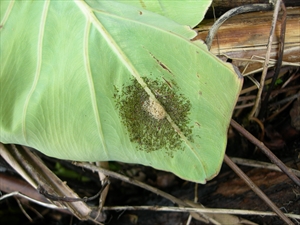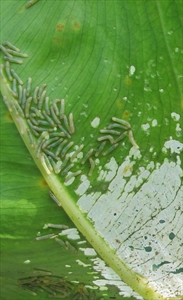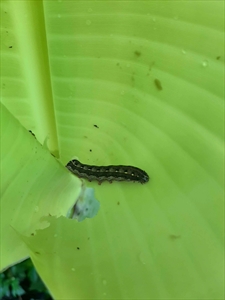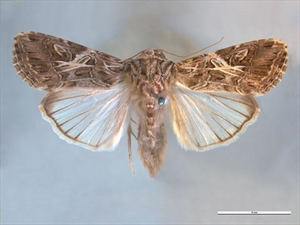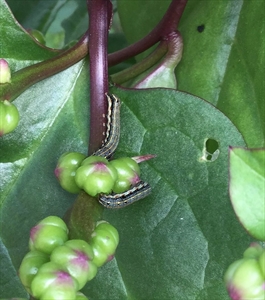- Widespread distribution. Tropics of Asia, Oceania. On cabbages, tomato, okra, chilli, cassava, maize, sweetpotato, rice, eggplant, watercress, and more. An important pest.
- Egg masses on either side of the leaves. Young caterpillars strip the leaf surface; older ones eat the leaves including the leaf stalks. Mostly feeding at night.
- The moth is a strong flyer.
- Cultural control: check for egg masses regularly, and destroy them by hand; allow chicken in the field.
- Natural enemies: predators and parasitoid wasps. Effective unless disturbed by cyclones or droughts.
- Chemical control: PDPs - neem, derris, pyrethrum or chilli; spinosad or Bt (Bacillus thuringiensis) on young caterpillars. Alternatively, use synthetic pyrethroids, but they are likely to kill natural enemies.
